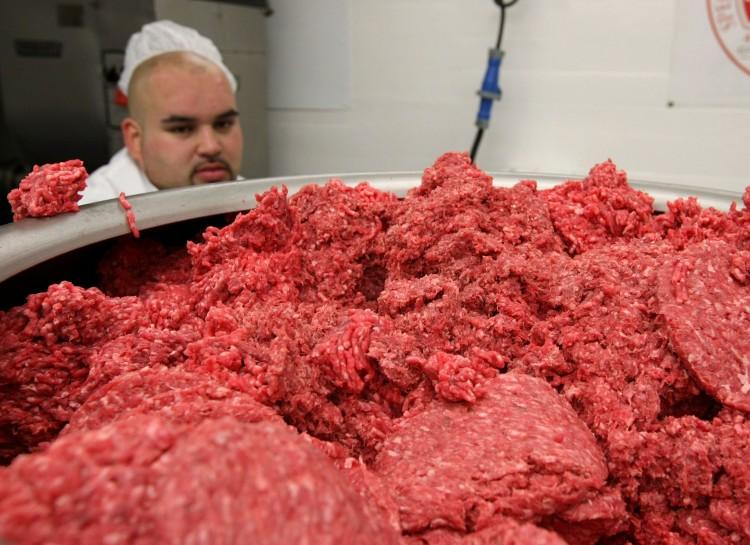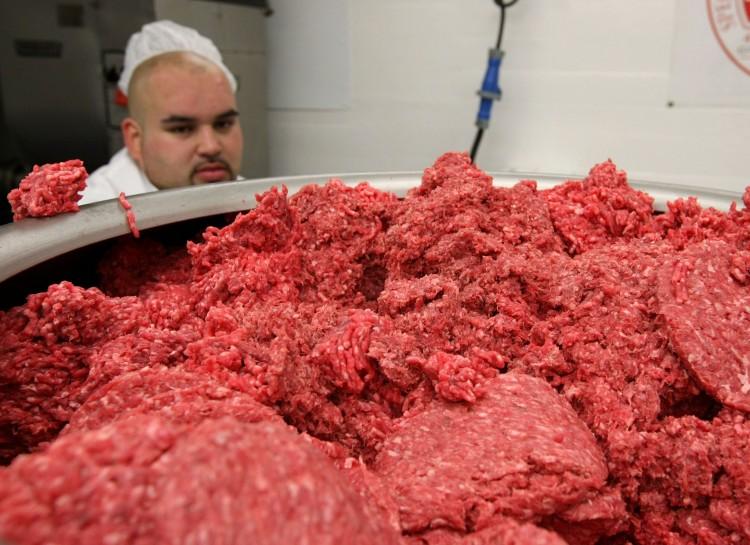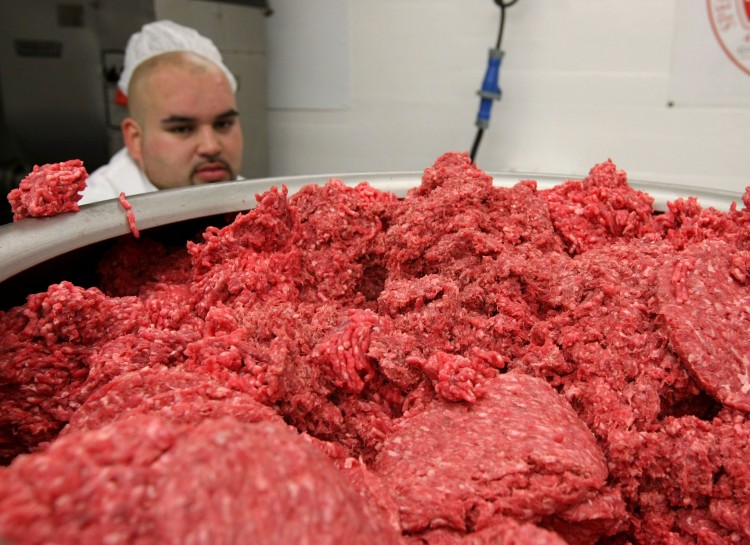The recent backlash over the widespread use of a lean beef product has led to the closure of plants owned by its distributor, Beef Products Inc. (BPI). Some meat and food experts are looking to reduce the hysteria and add perspective to industry practices.
Referred to by activists and the media as “pink slime,” the lean, finely textured beef (LFTB) product is often added to ground beef to make it leaner. The “pink slime” frenzy and negative publicity led to the banning of BPI products in various schools and supermarkets nationwide, and the recent announced closing of three of four BPI plants—a loss of 650 jobs.
“It is disheartening for me to see the manner these products have been reported and misrepresented,” said H. Russell Cross, a former administrator with the U.S. Department of Agriculture’s Food Safety and Inspection Service, now at Texas A&M’s Department of Animal Science.
“A part of the problem is that the scientific side cannot be easily explained in a one-minute sound bite,” he added.
Leading the controversy surrounding LFTB is the use of ammonia, or ammonium hydroxide, in treating the meat during processing. Small amounts of ammonia gas are sprayed on the LFTB to prevent contamination by bacteria, such as E. coli and salmonella—a procedure approved by the USDA.
The idea of spraying a chemical found in household cleaners to prevent pathogens in beef—even in small, government-approved amounts—is unsettling to some. Celebrity chef Jamie Oliver, and several fast food chains such as McDonald’s and Taco Bell, have stopped using ammonia-treated beef.
The ammonia scare is “taken out of context in relation to the safety of our food,” said Craig Letch, spokesperson of BPI. “If I told you tofu has four times more ammonia than beef does, what would you say to that? It really does. But saying it like that would be [using that information] out of context,” he added.
According to Letch, the use of ammonia in processed food was adopted in 1974, and there is no evidence that it is harmful for human consumption. In defending the use of ammonium hydroxide in meat-processing, he referenced the 1993 E. coli outbreak, when 700 Americans became ill and 4 children died. It was traced back to hamburgers from Jack in the Box, which had “errors in meat processing and cooking,” according to the USDA.
BPI patented a practice of ammonia treatment on mass productions of beef to prevent such outbreaks from occurring again.
Ammonia is just one element of the food safety process, and it is misunderstood because there is no context, Letch said, adding: “It’s also important to note that the beef in the United States is the safest in the world.”
Banning BPI’s meat products does not remove ammonia from the food industry. The use of ammonium hydroxide is “widespread” in baked goods, cheese, chocolate, other confectionery products, and puddings, said Guy Crosby, with the Department of Nutrition at the Harvard School of Public Health.
He said the ammonia elevates the pH level, killing bacteria, and works with the digestive system. “In principal, beef with an elevated pH, such as after treating with ammonia, will be easier to digest, and could offer some slight nutritional advantage compared to regular ground beef,” according to Crosby.
The human body naturally takes in small amounts of ammonia through food, he added. The USDA approves the small amount of ammonia used in the beef industry as within the range the human body can handle.
Without human intervention, ammonia is “commonly found naturally in meat, fruits, and vegetables,” said Texas A&M’s Cross.
Ammonia is formed in the “gastrointestinal tract by the enzymatic breakdown of food components,” states the World Health Organization (WHO), citing the National Library of Medicine. WHO says it has a toxic effect on healthy humans only “if the intake becomes higher than the capacity to detoxify.”
The USDA sees the amount used by the U.S food industry—including meat-processor BPI—as within the human capacity to detoxify.
Jeff Savell, E.M. Rosenthal chairholder with Texas A&M’s Department of Animal Science, says the use of ammonia in meat-processing does not equate with increased risk. “There is nothing riskier about LFTB that requires this [ammonia] treatment.”
Some critics are uncomfortable with the lean filler’s “cellular breakdown and connective tissues.” In essence, the fillers are trimmings from steaks and roasts, with fat removed during treatment. The subsequent lean product is then added to ground beef as a “concentrated, lean source of protein,” according to the Oklahoma Department of Agriculture.
“LFTB has the same nutrients that would be found in steak or roast,” Cross said. “It is high in protein and the human body can digest the proteins found in LFTB the same as it does with other meat products,” Cross said.
Backlash
A recent online petition against LFTB reached over 200,000 signatures in nine days, successfully pressuring the USDA to grant schools the decision to serve LFTB products in their cafeterias—or not.
The petition cites a New York Times article based on “government and industry records” that states E. coli has in fact been found “dozens of times” in BPI products, questioning the effectiveness of ammonia-treated beef.
“Unfortunately, the use of ammonia to kill pathogens by Beef Products Inc. has not been foolproof, with occasional incidences of contaminated beef,” Crosby said.
Since LFTB is made of “cheaper scraps of beef,” people are likely to purchase them for cost savings “rather than nutritional or safety considerations,” Crosby said.
“We have never been traced back to any food poisoning outbreak,” Letch said.
Even with an imperfect record, USDA data shows that E. coli contamination has “declined significantly over the past decade,” largely due to food safety interventions, such as the use of ammonia. According to the South Dakota Department of Agriculture, the number of USDA ground beef samples testing positive for E. coli “dropped 55 percent between 2000 and 2010.”
Despite the backlash against using LFTB, the demand for beef is still high. The United States will need 1.5 million additional heads of cattle to replace meat production from the three suspended BPI plants, and other LFTB producers. “American families will pay the price at the checkout counter,” the American Meat Institute said in a statement.
Still, not everyone is convinced of ammonia’s safety. “Ammonium treatment is a fairly common antimicrobial process in the food industry. Although it is commonly used, it does not mean it is safe,” said Mee Young Hong, a member of the American Association for Cancer Research, and nutritional science professor at San Diego State University.
“It is the U.S Department of Agriculture and U.S. Food and Drug Administration’s role to decide if the process is safe based on research and strong ethics for public health,” she said. “But it is not always conclusive and we see many cases that are still controversial.”






